Manuel Guimarães
Emergent social NPC interactions in the Social NPCs Skyrim mod and beyond
Jul 27, 2022



Abstract:This work presents an implementation of a social architecture model for authoring Non-Player Character (NPC) in open world games inspired in academic research on agentbased modeling. Believable NPC authoring is burdensome in terms of rich dialogue and responsive behaviors. We briefly present the characteristics and advantages of using a social agent architecture for this task and describe an implementation of a social agent architecture CiF-CK released as a mod Social NPCs for The Elder Scrolls V: Skyrim
Towards Explainable Social Agent Authoring tools: A case study on FAtiMA-Toolkit
Jun 07, 2022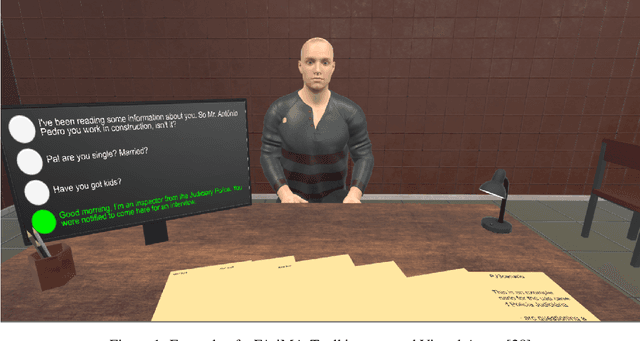

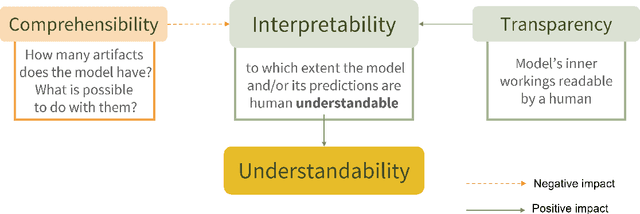

Abstract:The deployment of Socially Intelligent Agents (SIAs) in learning environments has proven to have several advantages in different areas of application. Social Agent Authoring Tools allow scenario designers to create tailored experiences with high control over SIAs behaviour, however, on the flip side, this comes at a cost as the complexity of the scenarios and its authoring can become overbearing. In this paper we introduce the concept of Explainable Social Agent Authoring Tools with the goal of analysing if authoring tools for social agents are understandable and interpretable. To this end we examine whether an authoring tool, FAtiMA-Toolkit, is understandable and its authoring steps interpretable, from the point-of-view of the author. We conducted two user studies to quantitatively assess the Interpretability, Comprehensibility and Transparency of FAtiMA-Toolkit from the perspective of a scenario designer. One of the key findings is the fact that FAtiMA-Toolkit's conceptual model is, in general, understandable, however the emotional-based concepts were not as easily understood and used by the authors. Although there are some positive aspects regarding the explainability of FAtiMA-Toolkit, there is still progress to be made to achieve a fully explainable social agent authoring tool. We provide a set of key concepts and possible solutions that can guide developers to build such tools.
FAtiMA Toolkit -- Toward an effective and accessible tool for the development of intelligent virtual agents and social robots
Mar 04, 2021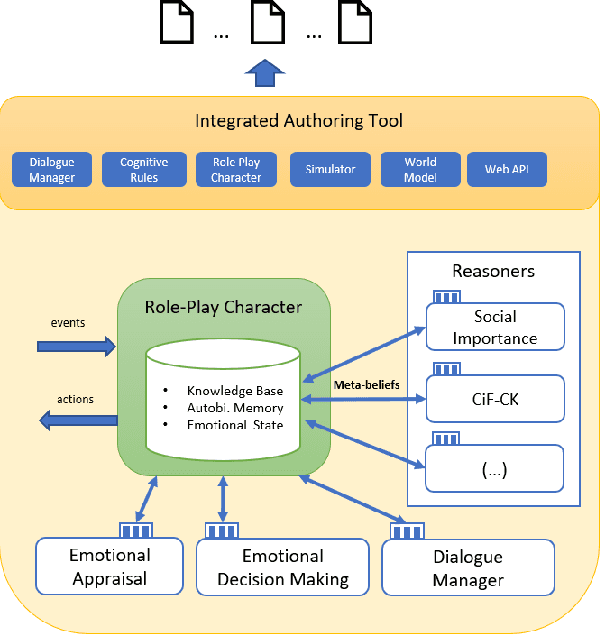
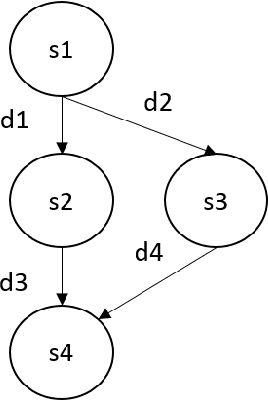
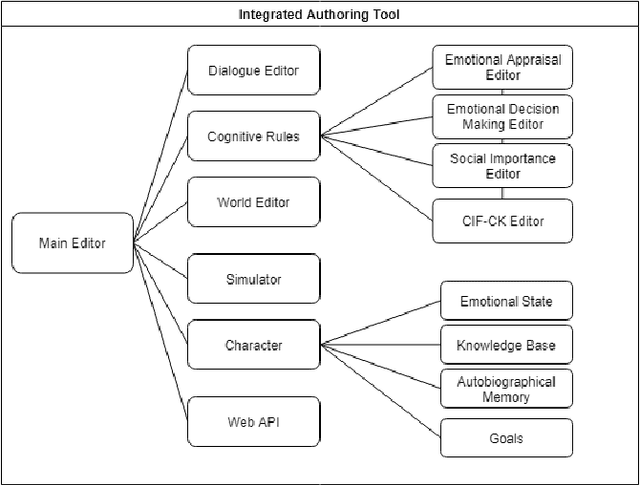
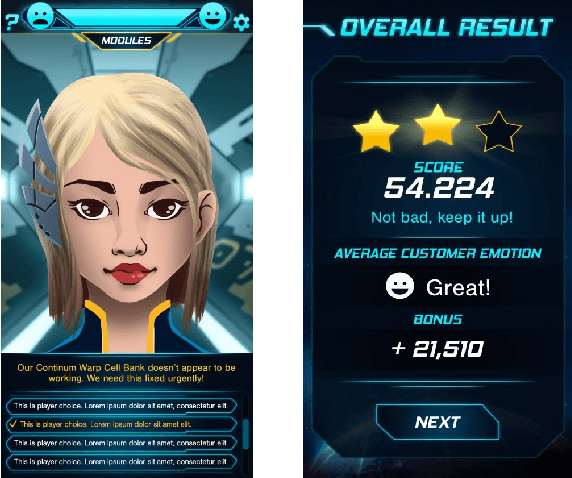
Abstract:More than a decade has passed since the development of FearNot!, an application designed to help children deal with bullying through role-playing with virtual characters. It was also the application that led to the creation of FAtiMA, an affective agent architecture for creating autonomous characters that can evoke empathic responses. In this paper, we describe FAtiMA Toolkit, a collection of open-source tools that is designed to help researchers, game developers and roboticists incorporate a computational model of emotion and decision-making in their work. The toolkit was developed with the goal of making FAtiMA more accessible, easier to incorporate into different projects and more flexible in its capabilities for human-agent interaction, based upon the experience gathered over the years across different virtual environments and human-robot interaction scenarios. As a result, this work makes several different contributions to the field of Agent-Based Architectures. More precisely, FAtiMA Toolkit's library based design allows developers to easily integrate it with other frameworks, its meta-cognitive model affords different internal reasoners and affective components and its explicit dialogue structure gives control to the author even within highly complex scenarios. To demonstrate the use of FAtiMA Toolkit, several different use cases where the toolkit was successfully applied are described and discussed.
CHARET: Character-centered Approach to Emotion Tracking in Stories
Feb 15, 2021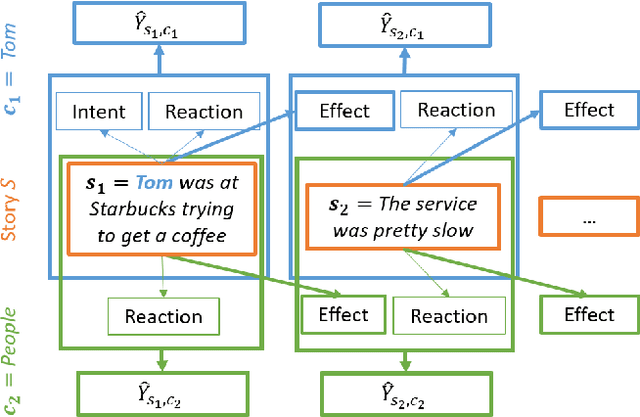
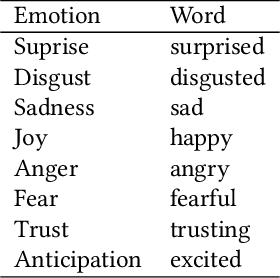
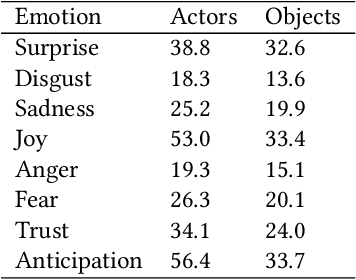
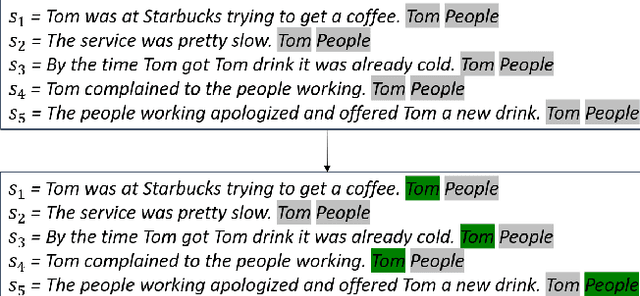
Abstract:Autonomous agents that can engage in social interactions witha human is the ultimate goal of a myriad of applications. A keychallenge in the design of these applications is to define the socialbehavior of the agent, which requires extensive content creation.In this research, we explore how we can leverage current state-of-the-art tools to make inferences about the emotional state ofa character in a story as events unfold, in a coherent way. Wepropose a character role-labelling approach to emotion tracking thataccounts for the semantics of emotions. We show that by identifyingactors and objects of events and considering the emotional stateof the characters, we can achieve better performance in this task,when compared to end-to-end approaches.
 Add to Chrome
Add to Chrome Add to Firefox
Add to Firefox Add to Edge
Add to Edge